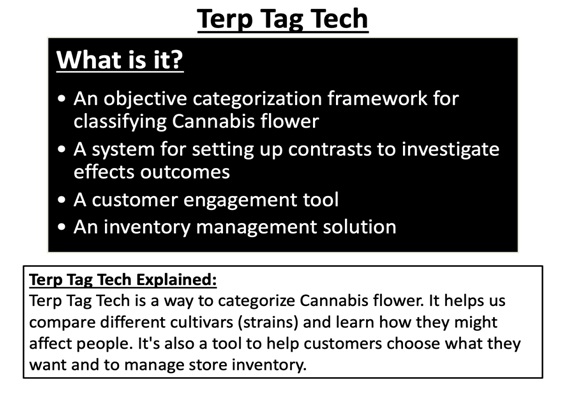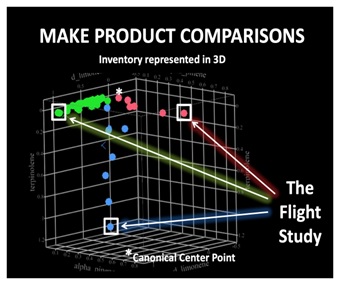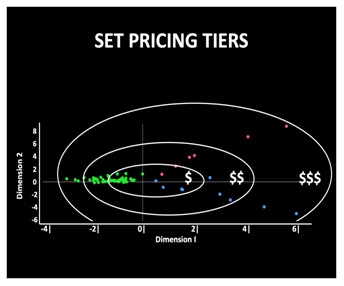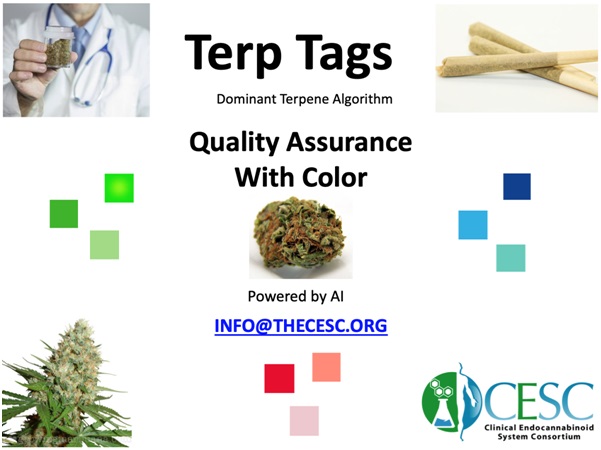Although Cannabis is legal and readily accessible in many US and some international jurisdictions, much of the industry maintains some of its practices from traditional markets. However, consumers have entered a new market of Cannabis products and brands. As they grow comfortable and familiar with the commodity, questions arise about the quality and effect of the different plant cultivars.
“Which is best for pain?”
“What are the attributes of quality Cannabis?”
Part of the problem is that Cannabis plant names, often a major factor in consumer purchasing decisions, have little empirical relevance to effect. The traditional industry’s Sativa, Indica, and Hybrid categories are proven as poor designations of effect. Brands, cultivators, and retail stores might invent or change product names if sales are not adequate. Scientific analysis reveals a weak association between these older categories and the plant’s terpenoids. As well, new plants with minor cannabinoids are being introduced into the market without objective characterization and categorization. Cannabis contains hundreds of potentially active or interactive phyto-constituents that could be incorporated into an appropriate categorization algorithm.
Initially, botanists categorized Cannabis by dominant phytocannabinoids, Δ9 THC (tetrahydrocannabinol) and CBD (cannabidiol), using Type I (THC dominant), Type II (Equivalent THC and CBD), and Type III (CBD dominant) to distinguish plant types. Yet, very little research.

has evaluated the multiple combinations of terpenes or how they might affect the consumer.Terpenes, a component of the essential oil of the Cannabis flower, are well known to have medicinal benefits and toxicities in isolated forms. However, studying the combined synergistic effect of multiple plant constituents is uncommon in Cannabis research. As well, multi-agent pharmaceutical development is an untapped paradigm. In that regard, Cannabis blazes a trail to the potential discovery of new drug combinations or classes. Whether it is a consumer product good (CPG) or pharmaceutical drug, the process best starts by creating an index of cultivar subtypes that aids current consumers in their purchasing decisions.
Terp Tag Technology
CESC introduces Terp Tag Technology, a process using artificial intelligence (AI) to map the multiple constituents in Cannabis. The work began by sourcing data from Cannabis prevalent communities mapping their aroma descriptors to terpene profiles. The results establish an algorithm that incorporates the content and ratio of both cannabinoids and terpenoids. Terp Tag Technology is an objective categorization of classifying Cannabis flower subtypes. The algorithm is dynamic, adapting to new hybrids and characteristic effects. “By putting a stake in the sand, we are able to compare different cultivars and learn how they might affect people,” states Dr. John Abrams, CESC’s Chief Science Officer.
The Cannabis Flight Study
The wine industry incorporates a “flight” when marketing different varieties. This concept, commonly presented to the consumer at wineries and tastings, involves a comparison sampling of different types of wine. The concept also works well as an empirical real time trial of complex multi-agent Cannabis cultivars. All consumers are not alike. Some seek products that provide energy, focus, or creativity. Others require products to relieve pain or induce sleep. Finally, others like to vary their experience depending on the occasion.
The Cannabis Flight Study will be launched at San Francisco’s Flore Dispensary,


the historic epicenter of the Cannabis industry’s resurgence. Flore’s Cannabis flower inventory is tagged using Terp Tag Technology. The store is preparing to offer Cannabis Flights to participants interested in providing their feedback. Responses are generated on several experiential categories, including aroma, altered effects, relaxed-energetic effects, head-body effects, and specified mood affect defined as happy, euphoric, aroused, focused, and creative. “Combining The Cannabis Flight Study with our ongoing Dosing Project initiative contributes to a better understanding of both recreational and medicinal indications,” states Dr. Jean Talleyrand, CESC’s Chief Medical Officer.
The Cannabis industry is transitioning from awareness and acceptance to quality assurance. Terp Tag Technology, as an objective measure of quality, comprises a methodology that assigns Cannabis flowers to categories based on relative as well as absolute terpene content. Terp Tag AI is dynamic yet identifies consistent reliable products. Quality attributes such as aroma, taste, and effect are correlated with terpenes. Terp Tagging Cannabis flowers assure consumers get what they expect. As a tool, Terp Tags manage product lines for cultivation, distribution, and retail by ensuring the industry maintains an appropriately broad range of cultivar types. Contact us at [email protected] to learn how Terp Tag Technology may benefit your enterprise.

Editors’ Note: This is an excerpt from our Monthly Playbook. If you would like to read the full monthly playbook and join the thousands of others you can sign up below.


